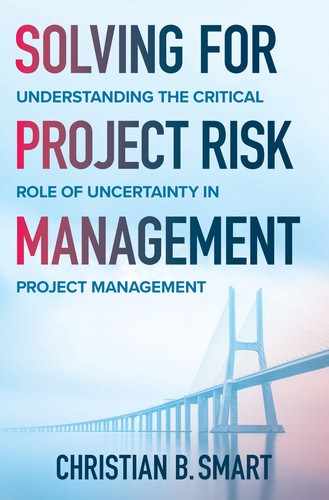Book Description
Risk is real—but you can manage it with this hard-hitting guide to reducing risk on any project, in any industry
All projects, large and small, are subject to various risks. But the failure to manage inherent risk with diligence and know-how can lead to devastating consequences for an organization. In this comprehensive hands-on guide, a renowned expert in the field provides everything organizations need to conduct project risk management the right way.
Why do so many projects come in over schedule and over budget? How do projected expenditures and schedules line up with reality? How can you accurately assess risk to mitigate financial disaster? Through a methodical, statistics-based approach, Christian B. Smart reveals:
- The enduring problem of cost and schedule growth
- How rigorous project risk management can reduce the impact of uncertainty
- The systematic tendency to underestimate risk—and how to avoid it
- Ways to accurately assess confidence levels in project risk management
- The need for proper risk management at the portfolio level
The author lays out common problems and explains how to effectively solve them. And while he employs a wealth of illustrative charts, graphs, and statistics, he presents the material in an accessible style, and peppers the text with powerful personal anecdotes.
Ideal for project managers, business analysts, and senior decision makers in both the public and private sectors, Solving for Project Risk Management offers everything you need to ensure your projects run smoothly, on budget, and deliver the expected outcomes.
Table of Contents
- Cover
- Title Page
- Copyright Page
- Dedication
- Contents
- Acknowledgments
- Introduction
- Chapter 1. Show Me the Data: The Enduring Problems of Cost Growth and Schedule Delays
- Chapter 2. Here We Grow Again: Why Cost Increases and Schedule Delays Occur
- Chapter 3. Beyond the Matrix: The Cost and Schedule Risk Imperative
- Chapter 4. Covered with Oil: Incorporating Realism in Cost and Schedule Risk Analysis
- Chapter 5. The Portfolio Effect and the Free Lunch: The Limits of Diversification
- Chapter 6. Here Be Dragons: Considering the Tails in Risk Management
- Chapter 7. Trying to Do Too Much with Too Little: The Importance of Portfolio Planning
- Chapter 8. Thinking Strategically: Managing Risk, Establishing Reserves, and Setting Incentives
- Chapter 9. Summary and Conclusion: Reaping the Rewards of Risk Management
- Notes
- Bibliography
- Index
